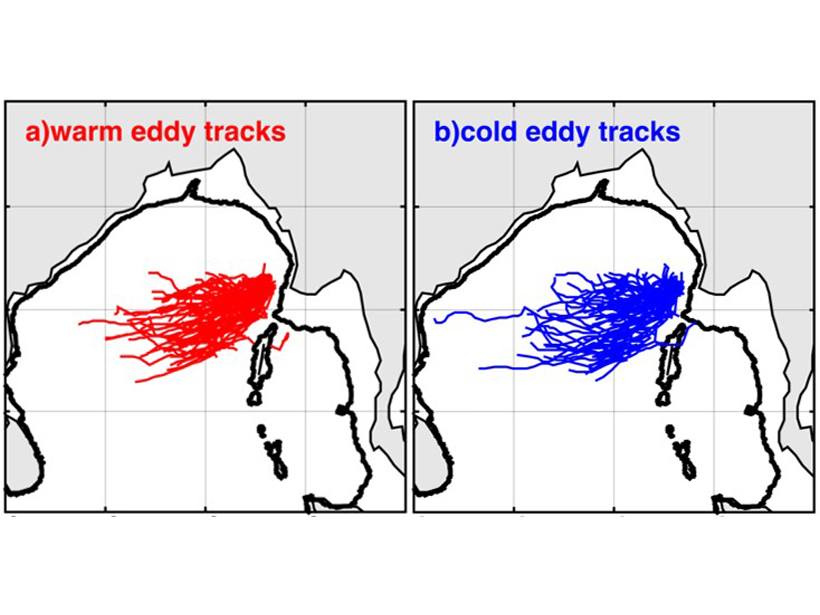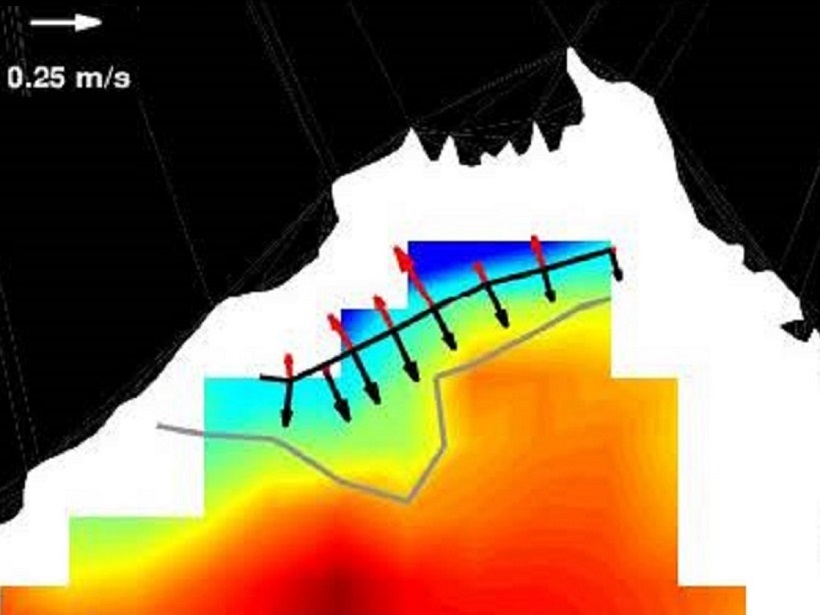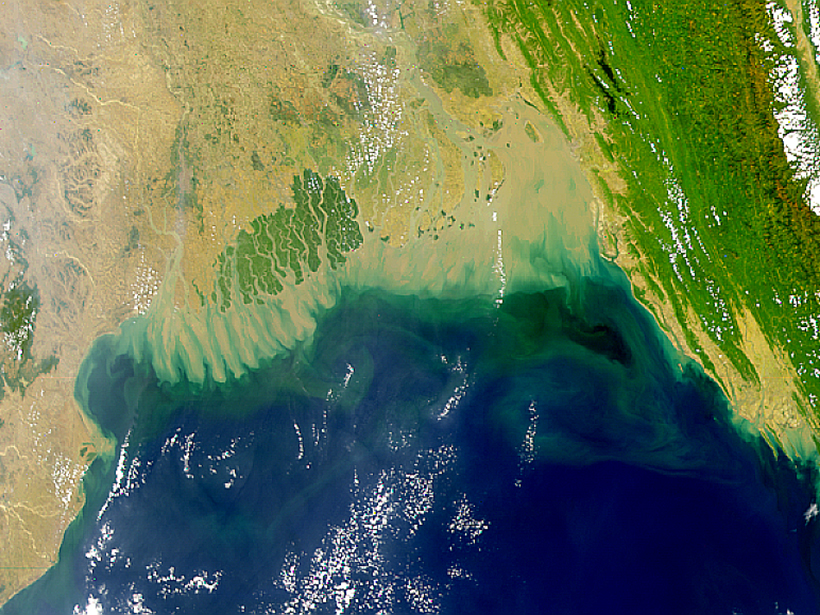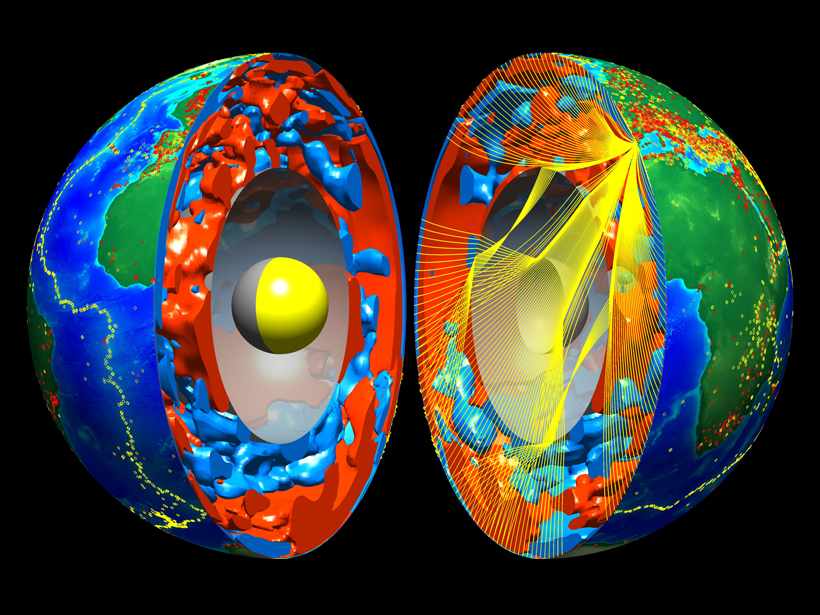Eddies in the central Bay of Bengal are generated near the eastern boundary of the basin, related to equatorial wind forcing, nonlinearity, and the topographic “bump” of Myanmar.
Indian Ocean
Dispersal of River Water by Ocean Eddies and Shallow Ekman Flow
Low-salinity water from the Ganga-Brahmaputra river is transported by mesoscale eddies in the Bay of Bengal, but when the monsoon winds strengthen, a shallow “Ekman” flow dominates dispersal of water.
Scientists Discover New Ocean Current off Madagascar
The warm and salty Southwest Madagascar Coastal Current influences upwelling that supports rich marine ecosystems along the southern coast.
Nutrient-Rich Water Around Seamounts Lures Top Predators
At an Indian Ocean marine refuge, tides drive cold water laden with nutrients onto the tops of underwater mountains, where it sustains a long food chain that culminates in sharks, tuna, and seabirds.
Seafloor Data from Lost Airliner Search Are Publicly Released
Detailed maps of the bottom of the Indian Ocean reveal deep canyons and landslides but no wreckage of Malaysia Airlines flight MH370, which went missing in 2014.
What Makes the Biggest Cycle in Tropical Weather Tick?
The Madden-Julian Oscillation drives storms across the Indian and Pacific oceans every 30 to 60 days. New research suggests that clouds absorbing and reemitting radiative energy play a key role.
Geological Insights from Malaysia Airlines Flight MH370 Search
A rich trove of marine geophysical data acquired in the search for missing flight MH370 is yielding knowledge of ocean floor processes at a level of detail rare in the deep ocean.
Deciphering the Bay of Bengal's Tectonic Origins
New magnetic and gravity data suggest that the boundary between continental and oceanic crust lies beneath northern Bangladesh, along the line of an Early Cretaceous spreading center.
An Ancient Sea Once Separated the Pacific and Indian Oceans
Seafloor under the hypothesized East Asian Sea vanished 10 million years ago as surrounding plates swallowed it up, according to new reconstructions of plate tectonics in the Philippine Sea region.
Massive Ancient Tectonic Slab Found Below the Indian Ocean
Scientists discover a surprisingly positioned tectonic plate, buried below the southern Indian Ocean, that spans the entire mantle.










